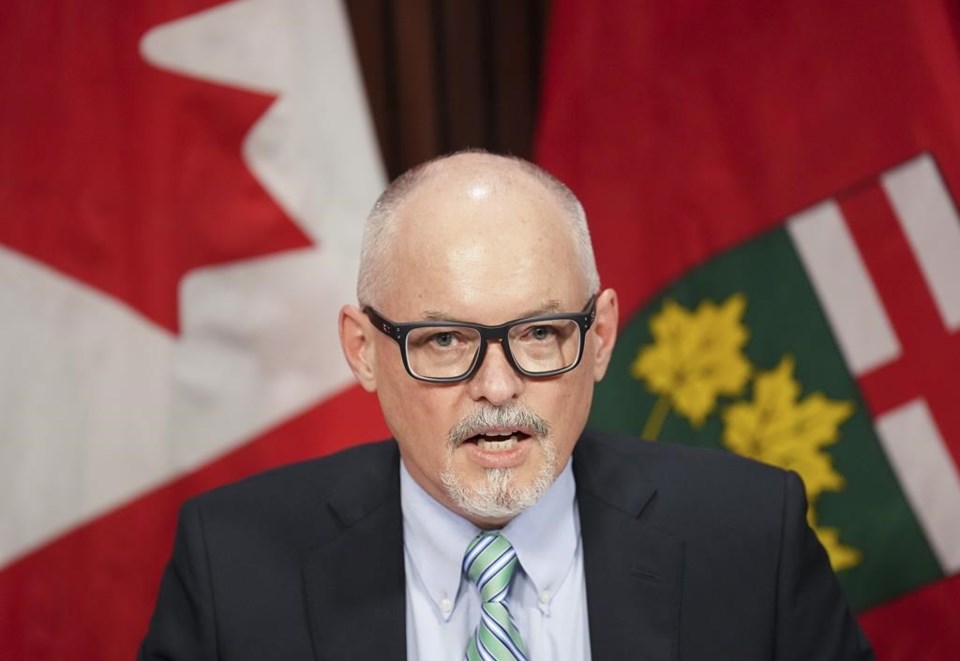TORONTO — The seventh wave of COVID-19 in Ontario has peaked, the province's chief medical officer of health said Friday.
Dr. Kieran Moore said in an interview that key indicators are peaking or already trending downward.
"I think we've already started on the downswing," he said.Â
"It's always easier to look back and say where we were, but from our vantage point just today, it certainly has stabilized and we're seeing a decrease in the overall number of people hospitalized, stabilization in ICU, which are typically late indicators, and at a provincial level the wastewater is on the decrease."
Public Health Ontario says COVID-19 case rates decreased in 22 of Ontario's 34 health units for the week ending July 30, with per cent positivity down slightly week over week, and hospital admissions decreasing to 306 compared to 463 the previous week.Â
There were 46 COVID-19 deaths reported for the week ending July 30, compared to 75 the week before.
Moore said he anticipates that the overall risk and impact on the health sector will continue decreasing through August.
Looking ahead to the fall, a new wave of COVID-19 may not be as bad as Moore would have predicted a few months ago, he said, though colder weather pushing more activities indoors does increase risk.Â
A lot of Ontarians have already been infected with the Omicron variant – seroprevalence studies suggest half the population has natural immunity, he said – and that combined with high vaccination rates and the fact that a new variant of concern has not yet emerged all bode well, Moore said.
"It will be difficult for a very similar virus to propagate in our populations," he said.Â
"So we're scouring the globe with Public Health Ontario, Public Health Agency of Canada to try to see if there's a new variant out there that is posing a risk to us. But we do see a period of calm in the coming weeks and months, because we're not able to see a new threat on the horizon at present."
There is still a risk of reinfection with Omicron, Moore said, but people who have been vaccinated and infected are much better protected than people with an infection but no vaccination.
Ontarians aged 18 and older have been eligible for a fourth dose of a COVID-19 vaccine for three weeks – previously it was only available to people 60 and older, as well as immunocompromised or Indigenous adults. Just under 16 per cent of Ontario adults have received four doses, Moore said.Â
In the particularly vulnerable population of people aged 80 and older, about 61 per cent have received a fourth dose, Moore said.
As well, vaccines for children under five became available a week ago, and Moore said 9,000 have received their first shot. That is about one per cent of the total population in Ontario in that age group.
"That was anticipated in August to be low numbers as parents are busy on holidays, and certainly anticipate those numbers increasing as we head into the fall," he said.
This report by The Canadian Press was first published Aug. 5, 2022.
Allison Jones, The Canadian Press




